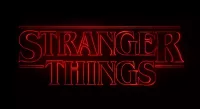PlayStation is a video game brand by Sony Interactive Entertainment (SIE), a division of Sony. It features home consoles, handhelds, online services and other media. It's a major player in the gaming industry, providing entertainment and technological advancements.
June 1991: Sony Reveals 'Play Station'
In June 1991, at the Consumer Electronics Show, Sony revealed a Super Famicom with a built-in CD-ROM drive called "Play Station" (SNES-CD).
June 1992: Fate of PlayStation Project Decided
In June 1992, a meeting was held to decide the fate of the PlayStation project, where Kutaragi unveiled a proprietary CD-ROM-based system, leading to Sony President Ohga's decision to retain the project.
November 16, 1993: Sony Computer Entertainment Inc. (SCEI) Formed
On November 16, 1993, Sony Computer Entertainment Inc. (SCEI) was formed by Kutaragi, Maruyama, and Sato.
1993: PlayStation Project Greenlit and Phil Harrison Recruited
In 1993, the PlayStation project was greenlit by Sony executives, and Phil Harrison was recruited to attract developers to the new PlayStation platform.
December 3, 1994: Original PlayStation Released in Japan
On December 3, 1994, the original PlayStation was released in Japan, marking the beginning of the PlayStation console series.
December 1994: PlayStation Hits Japanese Stores
In December 1994, the PlayStation was released in Japanese stores and gained massive sales due to its lower price point compared to the Sega Saturn.
1994: Sony Computer Entertainment of America (SCEA) Founded
In 1994, Sony Interactive Entertainment founded Sony Computer Entertainment of America (SCEA).
1994: PlayStation Control Pad Release
In 1994, the PlayStation control pad was released as the first controller for the original PlayStation. It featured a D-pad, 4 main select buttons, and start and select buttons on the face and 'Shoulder buttons' on the top [L1, L2, R1, R2].
1994: First PlayStation Home Console Release
In 1994, the first PlayStation home console was released in Japan, marking the beginning of the PlayStation brand.
1996: PlayStation Analog Joystick Release
In 1996, Sony released the PlayStation Analog Joystick for use with flight simulation games.
1997: Dual Analog Controller Release
In 1997, the original digital controller was replaced by the Dual Analog, which added two analog sticks.
1997: PlayStation Underground Magazine Launch
In Spring 1997, Sony Computer Entertainment America started publishing PlayStation Underground, a quarterly non-traditional magazine with CDs containing demos, interviews, and more.
1998: DualShock Controller Release
In 1998, the DualShock controller for the PlayStation succeeded its predecessor, the Dual Analog, and became the longest running series of controllers for the PlayStation brand. In addition to the inputs of the original, digital, controller, the DualShock featured two analog sticks which can also be depressed to activate the L3 and R3 buttons.
January 23, 1999: PocketStation Release
On January 23, 1999, the PocketStation, a Memory Card peripheral for the original PlayStation, was released exclusively in Japan. It featured a monochrome LCD, a speaker, a real-time clock and infrared communication capability.
1999: PlayStation Sponsorship
In 1999, PlayStation became the main kit sponsor of French Ligue 1 club AJ Auxerre.
July 7, 2000: PS One Released
On July 7, 2000, the PS One was released concurrently with the PlayStation 2, featuring a smaller, redesigned version of the original PlayStation.
2000: Optional LCD Screen for PSone Release
In 2000, an optional 5-inch LCD screen (SCPH-131) was released for the PSone (a redesigned version of the original PlayStation), featuring built-in speakers and a headphone jack, as well as featuring an AV input jack.
2000: PlayStation 2 Released
In 2000, the PlayStation 2 was released as part of the sixth generation of video game consoles.
July 2001: PlayStation 2 Online Service Launch in Japan
In July 2001, online gaming on PlayStation consoles first started with the release of the unnamed PlayStation 2 online service in Japan.
2001: PlayStation Underground Phased Out
By 2001, Sony decided to phase out PlayStation Underground magazine to focus on JamPacks with the release of the PlayStation 2.
August 2002: PlayStation 2 Online Service Release in North America
In August 2002, the PlayStation 2's unnamed online service was released in North America.
2002: PlayStation 2 Linux Kit Release
In 2002, Sony released the first fully functioning operating system for a video game console in the form of a Linux kit for the PlayStation 2. This kit turned the console into a computer system when used with the necessary accessories.
2002: PSone Combo Pack Release
In 2002, the optional 5-inch LCD screen was later included as a pack-in bundle with the PSone called the "Combo Pack".
June 2003: PlayStation 2 Online Service Release in Europe
In June 2003, the PlayStation 2's unnamed online service was released in Europe.
December 2003: PlayStation and PS one Combined Shipments Reach 102.49 Million Units
By December 2003, the PlayStation and PS one had shipped a combined total of 102.49 million units.
2003: PlayStation 2 Sponsors Royal Rumble
In 2003, The PlayStation 2 sponsored the Royal Rumble WWE event.
2004: PlayStation 2 Sponsors WWE events
In 2004, The PlayStation 2 sponsored the Royal Rumble and Armageddon WWE events.
2004: PS2 Slimline
In 2004, the PS2 Slimline was released.
2004: PlayStation 2 Slimline Released
In 2004, the PlayStation 2 Slimline, the first major redesign of the PlayStation 2, was released.
March 2005: PlayStation Portable (PSP) Release
In March 2005, the PlayStation Portable (PSP) was released.
November 29, 2005: PS2 Reaches 100 Million Units Shipped
On November 29, 2005, the PlayStation 2 became the fastest game console to reach 100 million units shipped, accomplishing the feat within 5 years and 9 months from its launch.
2005: The Age Article on PlayStation Brand
In 2005, The Age published an article featuring opinions from industry experts, where the PlayStation brand was referred to as revolutionary and responsible for making gaming cool.
2005: PlayStation 2 Sponsors Royal Rumble
In 2005, The PlayStation 2 sponsored the Royal Rumble, Armageddon, and No Mercy WWE events.
July 2006: Racism Controversy
In July 2006, Sony faced criticism for a Netherlands advertising campaign featuring a white model in white and a black model in black to promote the Ceramic White and Piano Black PSPs, with some media outlets labeling the ads as racist.
November 11, 2006: PlayStation 3 Released in Japan
On November 11, 2006, the PlayStation 3 (PS3) was released in Japan.
November 2006: "All I want for Xmas is a PSP" Viral Campaign
In November 2006, Sony's American division launched a viral marketing campaign titled "All I want for Xmas is a PSP", which was exposed by internet users. Sony admitted the campaign was poorly executed.
2006: PlayStation Network Release
In 2006, the PlayStation Network, an online service focusing on online multiplayer gaming and digital media delivery, was released for use with the PlayStation 3.
June 11, 2007: PlayStation Blog Launch
On June 11, 2007, the PlayStation Blog, an online PlayStation-focused gaming blog, was launched as part of the PlayStation Network.
September 2007: PSP-2000 (Slim & Lite) Release
In September 2007, the PSP-2000 (also known as the Slim & Lite in PAL territories) was released as the first major hardware revision of the PlayStation Portable. It was lighter and slimmer than the original PSP, had a new gloss finish, and featured USB charging.
2007: PlayStation Sponsorship
In 2007, PlayStation's main kit sponsorship of French Ligue 1 club AJ Auxerre ended after a period of sponsorship between 1999 and 2007.
2007: Revised Slimline PS2 Shipped
In 2007, Sony began shipping a revision of the Slimline PlayStation 2 which was lighter than the original Slimline.
2007: PS2 Slimline Release
In 2007, a PS2 Slimline model was released.
December 11, 2008: PlayStation Home Open Public Beta Test
PlayStation Home started an open public beta test on December 11, 2008. It is a community-based social gaming networking service for the PlayStation 3 on the PlayStation Network.
2008: PlayStation 4 Development Begins
Development on the PlayStation 4 began as early as 2008.
2008: PSP-3000 Release
In 2008, Sony released a second hardware revision called the PSP-3000 which included several features that were not present in the PSP-2000, such as a built-in microphone and upgraded screen, as well as the ability to output PSP games in interlaced mode.
2008: Another Revision of the Slimline PS2 Released
In 2008, Sony released another revision of the Slimline PlayStation 2 with an overhauled internal design incorporating the power supply into the console.
May 28, 2009: PlayStation Blog Europe Launch
On May 28, 2009, Sony Computer Entertainment Europe launched a European sub-outlet, PlayStation Blog Europe, to replace the "semi-official" site Three Speech.
June 2, 2009: PlayStation Move Unveiled
On June 2, 2009, PlayStation Move, a motion-sensing game controller platform for the PlayStation 3, was first revealed.
September 1, 2009: PlayStation 3 Slim Released in North America and Europe
On September 1, 2009, the redesigned "slim" model of the PlayStation 3 was officially released in North America and Europe.
September 3, 2009: PlayStation 3 Slim Released in Japan, Australia, and New Zealand
On September 3, 2009, the redesigned "slim" model of the PlayStation 3 was officially released in Japan, Australia, and New Zealand.
September 24, 2009: PlayStation Store Downloads Milestone
As of September 24, 2009, there have been more than 600 million downloads from the PlayStation Store worldwide.
October 2009: PSP Go Release
Released in October 2009, the PSP Go is the biggest redesign of the PlayStation Portable to date. It features 16 GB of internal flash memory and does not have a UMD drive. All games must be purchased and downloaded from the PlayStation Store.
2009: PlayStation Sponsorship
In 2009, PlayStation became the main kit sponsor of French Ligue 1 club Olympique Lyonnais.
2009: PlayStation Listed as Top Social Brand
In 2009, Vitrue, Inc. listed the PlayStation brand at number 13 on their "The Vitrue 100: Top Social Brands of 2009".
February 2010: PlayStation Store Video Content on BRAVIA TVs and VAIO Laptops
From February 2010, video content from the PlayStation Store, such as films and television shows, became available on some new Sony BRAVIA televisions, VAIO laptop computers and Sony Blu-ray Disc players.
March 17, 2010: PlayStation Blog Share Launch
On March 17, 2010, a sub-site of the PlayStation Blog called PlayStation Blog Share was launched, allowing readers to submit and vote on ideas related to PlayStation.
April 15, 2010: "Room" Development Halt
On April 15, 2010, development of "Room" (R∞M), a service similar to PlayStation Home being developed for the PSP, was halted due to negative community feedback.
2010: Gizmodo: PlayStation Stands Apart
In 2010, Gizmodo claimed that the PlayStation brand was one of Sony's last products that truly stood apart from competitors.
2010: PlayStation Sponsorship
In 2010, PlayStation's main kit sponsorship of French Ligue 1 club Olympique Lyonnais ended.
2010: PlayStation 3 OS Feature Removal
In 2010, a firmware update removed the feature to install a second operating system on the PlayStation 3.
2010: Sony BRAVIA KDL22PX300 Release
In 2010, the Sony BRAVIA KDL22PX300, a 22-inch 720p television incorporating a PlayStation 2 console and 4 HDMI ports, was released.
January 11, 2011: PlayStation App Release
On January 11, 2011, the PlayStation App was released in several European countries for iOS (version 4 and above) and for Android (version 1.6 and above).
January 27, 2011: PlayStation Vita Unveiled
On January 27, 2011, the PlayStation Vita (previously codenamed Next Generation Portable (NGP)) was officially unveiled by Sony at the PlayStation Meeting 2011.

December 17, 2011: PlayStation Vita Japan Release
On December 17, 2011, the PlayStation Vita was released in Japan. The handheld features a 5-inch OLED touchscreen, two analog sticks and a rear touchpad.

2011: Sony Aims to Avoid Late Launch with Next-Gen Console
In 2011, PlayStation Europe CEO Jim Ryan emphasized that Sony wanted to avoid launching the next-generation console behind the competition.
2011: Sony Tablet S Release
In 2011, Sony Tablets, which are PlayStation Certified Android tablets offering connectivity with PlayStation 3 controllers and integrating with the PlayStation network, were released. The Sony Tablet S was one of the models released between 2011 and 2013.
2011: PSP Street (PSP-E1000) Announcement
In 2011, the PSP Street (PSP-E1000), a budget-focused PSP model, was announced at Gamescom. It lacks Wi-Fi and stereo speakers and has a matte finish.
2011: PlayStation Mobile Framework Announcement
In 2011, the PlayStation Mobile (formerly PlayStation Suite), a software framework for providing downloadable PlayStation content to Android 2.3+ devices and the PlayStation Vita, was announced with a planned release before the end of the year.

2011: PlayStation 3D Display Release
In late 2011, the 24-inch 1080p PlayStation branded 3D television, officially called the PlayStation 3D Display, was released, featuring SimulView for multiplayer gaming.
February 22, 2012: PlayStation Vita North America Release
On February 22, 2012, the PlayStation Vita was released in North America. The handheld features a 5-inch OLED touchscreen, two analog sticks and a rear touchpad.

April 2012: PlayStation Most Followed Brand on Facebook
As of April 2012, the PlayStation brand became the most followed brand on Facebook, boasting over 22 million fans.
October 24, 2012: Life With PlayStation Project Ends
As of PlayStation 3 system software update version 4.30 on October 24, 2012, the Life With PlayStation project has ended.
December 28, 2012: PlayStation 2 Shipments End in Japan
PlayStation 2 shipments in Japan ended on December 28, 2012.
2012: Sony Tablet P Release
In 2012, Sony Tablets, which are PlayStation Certified Android tablets offering connectivity with PlayStation 3 controllers and integrating with the PlayStation network, were released. The Sony Tablet P was one of the models released between 2011 and 2013.
2012: New 'Super Slim' PlayStation 3 Revealed
In 2012, Sony revealed a new "Super Slim" PlayStation 3 model featuring a redesigned case and a sliding door for the disc drive.
January 4, 2013: PS2 Production Ends Worldwide
The Guardian reported on January 4, 2013, that PS2 production had ended worldwide.
February 20, 2013: PlayStation 4 Announced
On February 20, 2013, Sony Computer Entertainment announced the PlayStation 4 (PS4) at a press conference and revealed some of its hardware specifications.
September 9, 2013: PlayStation TV Announcement
On September 9, 2013, PlayStation TV (known in Asia as PlayStation Vita TV), a microconsole and non-portable variant of the PlayStation Vita, was announced at a Sony Computer Entertainment Japan presentation.

September 2013: PCH-2000 series Announced
In September 2013, the new PCH-2000 series system, a lighter redesign of the PlayStation Vita, was announced at the SCEJA Press Conference prior to the Tokyo Game Show.

October 10, 2013: PCH-2000 series Release in Japan
On October 10, 2013, the new PCH-2000 series system was released in Japan in six colors. This model is thinner and lighter, with longer battery life, an LCD instead of OLED, a micro USB Type B port, 1 GB of internal storage memory.
November 14, 2013: PlayStation TV Japan Release
On November 14, 2013, the PlayStation TV was released in Japan.
November 15, 2013: PlayStation 4 Released in North America
On November 15, 2013, the PlayStation 4 was first released in North America, marking its entry into the eighth generation of video game consoles.
November 2013: PlayStation 3 Sales Reach 80 Million Consoles Worldwide
As of November 2013, the PlayStation 3 had sold over 80 million consoles worldwide.
2013: Xperia Tablet S and Z Release
In 2013, Sony Tablets, which are PlayStation Certified Android tablets offering connectivity with PlayStation 3 controllers and integrating with the PlayStation network, were released. The Xperia Tablet S and Xperia Tablet Z were models released between 2011 and 2013.
January 7, 2014: PlayStation Now Announcement
On January 7, 2014, PlayStation Now (PS Now), a Gaikai-based video game streaming service, was announced at the 2014 Consumer Electronic Show.
March 2, 2014: PlayStation App Installations Milestone
As of March 2, 2014, the PlayStation App had been installed more than 3.6 million times.
May 6, 2014: PlayStation Vita (PCH-2000 series) North America Release
On May 6, 2014, the PlayStation Vita (PCH-2000 series) was released in North America. This model is 20% thinner and 15% lighter compared to the original model, has an additional hour of battery life, an LCD instead of OLED, includes a micro USB Type B port, 1 GB of internal storage memory.

July 2014: 100 Million PlayStation Units Sold
In July 2014, Sony announced that PlayStation 3, PlayStation 4 and PlayStation Vita had sold a combined total of 100 million units.
July 31, 2014: PlayStation Now Open Beta Launch on PS4
On July 31, 2014, PlayStation Now was launched in Open Beta in the United States and Canada on PlayStation 4.
September 18, 2014: PlayStation Now Open Beta Launch on PS3
On September 18, 2014, PlayStation Now was launched in Open Beta on PlayStation 3.
October 14, 2014: PlayStation TV North America Release
On October 14, 2014, the PlayStation TV was released in North America.
November 14, 2014: PlayStation TV Europe and Australasia Release
On November 14, 2014, the PlayStation TV was released in Europe and Australasia.
2015: PlayStation 2 Ranked Best Selling Console of All Time
As of 2015, the PlayStation 2 has been ranked as the best-selling console of all time.
2015: Best-Selling Home Console Brand
In 2015, PlayStation became the best-selling home console brand worldwide.
2015: PlayStation Gear Launch
In 2015, Sony launched PlayStation Gear, which is an online store for merchandise and apparel.
March 31, 2016: PlayStation 2 Online Service Shutdown
On March 31, 2016, the PlayStation 2's online service was shut down.
September 7, 2016: PlayStation 4 Slim Unveiled
On September 7, 2016, the PlayStation 4 Slim, a revision of the original PS4 hardware with a streamlined form factor, was unveiled. The new casing is 40% smaller with a rounded body and matte finish. It also features minor updates to the DualShock 4 controller.
September 15, 2016: PlayStation 4 Slim Release
On September 15, 2016, the PS4 Slim was released with a 500GB model at the same price point as the original PS4 model, with model number CUH-2000.
October 2016: PlayStation VR Release
In October 2016, the PlayStation VR, a virtual reality device produced by Sony Computer Entertainment, was released. It features a 5.7-inch 1920x1080 resolution OLED display and 3D audio technology.
2016: PlayStation Sponsors Fiesta Bowl
In 2016, PlayStation became the sponsor of the Fiesta Bowl.
December 3, 2018: PlayStation Classic Launch
On December 3, 2018, the PlayStation Classic, a miniature version of the original 1994 PlayStation console preloaded with 20 games and two original controllers, was launched on the 24th anniversary of the original console.
March 31, 2019: Financial Report Affirms New Hardware Development
Sony's financial report for the quarter ending March 31, 2019, confirmed the development of new next-generation hardware, slated to ship no earlier than April 2020.
April 2019: First News of PlayStation 5
In April 2019, Mark Cerny provided the first news about the PlayStation 5 in an interview with Wired. Sony intended for the PlayStation 5 to be its next-generation console and planned to ship it worldwide by the end of 2020.
October 2019: PlayStation 5 specifications released
In October 2019, the specifications for the PlayStation 5 were released. The console uses an 8-core, 16-thread CPU based on AMD's Zen 2 microarchitecture. The graphics processor is a custom variant of AMD's Navi family using the RDNA microarchitecture, which includes support for hardware acceleration of ray-tracing rendering. Also the new console ships with a custom SSD storage, and the console's integrated Blu-ray drive would support 100 GB Blu-ray discs and Ultra HD Blu-ray.
December 2019: PlayStation Network Active Users
As of December 2019, the PlayStation Network had over 103 million active users monthly.
April 2020: PlayStation 5 shipment plans
Sony affirmed that new next-generation hardware was in development but would ship no earlier than April 2020.
June 1, 2020: PlayStation Blog Europe Merger
On June 1, 2020, PlayStation Blog Europe branch was merged into the main PlayStation Blog outlet.
July 2020: PlayStation Indies Program Introduction
In July 2020, as Sony prepared to transition from the PlayStation 4 to the PlayStation 5, they introduced a new PlayStation Indies program led by Shuhei Yoshida to spotlight innovative indie titles for the PlayStation 4 and 5.
November 12, 2020: PlayStation 5 Worldwide Release
The PlayStation 5 was released worldwide on November 12, 2020, marking the beginning of the ninth generation of video game consoles alongside the Xbox Series X and Series S.
2020: PlayStation 5 Release
In 2020, the PlayStation 5 was released as the most recent console in the PlayStation series.
June 2022: PlayStation Now Merged into PlayStation Plus
In June 2022, PlayStation Now was merged into PlayStation Plus and is no longer available as a standalone subscription.
2022: PlayStation Sponsorship Ends
In 2022, PlayStation ended it's sponsorship of the Fiesta Bowl.
2022: Spartacus Subscription Service Planned Release
In 2022, Sony planned to release 'Spartacus' in the second quarter, a subscription service intended to compete with Xbox Game Pass. The service would incorporate PlayStation Plus, PlayStation Now, and access to PlayStation 1, 2, and 3 games in the most expensive tier.
August 23, 2023: PlayStation Portal Unveiled
On August 23, 2023, Sony officially unveiled the Project Q as PlayStation Portal, a new portable system that can stream PS5 games from a home console.
October 2023: PlayStation 5 Slimmer Design Release
In October 2023, a revised slimmer design for the PS5 was released. Besides the slimmer design, the slim model features 1 TB of internal storage and replaces one of the USB-A ports with USB-C. The base version also removes the internal optical disc drive, replaced by an external drive.
November 15, 2023: PlayStation Portal Release
On November 15, 2023, the PlayStation Portal was released for $199.99.
November 2024: PlayStation 5 Pro Release
The PlayStation 5 Pro was released in November 2024. It features three main upgrades over the base PS5 model: a GPU that was about 45% faster than the base PS5 GPU, the inclusion of an image upscaling technology called PlayStation Spectral Super Resolution (PSSR), and an increase of internal storage to 2 TB. Games are able to take advantage of the improved graphical performance if programmed for it, with about 50 games ready to use this feature at launch.
October 2025: Next PlayStation Console in Early Development
In October 2025, Cerny stated that the next PlayStation console was in early development and likely to be released in "a few years time". Sony is collaborating with AMD to use its new Radience Cores in the GPU to better support real-time ray tracing and upscaling as to offload these from other components.
Mentioned in this timeline
Xbox is a video gaming brand owned by Microsoft Gaming...

Nintendo is a Japanese multinational video game company based in...
Facebook is a social media and networking service created in...

Sony is a Japanese multinational conglomerate based in Tokyo Its...

Microsoft an American multinational technology corporation headquartered in Redmond Washington...
New Zealand is an island country located in the southwestern...
Trending

A state of emergency grants governments extraordinary powers during crises to ensure citizens' safety This declaration typically in response to...
Drake Lindsey is an American college football quarterback currently playing for the Minnesota Golden Gophers His career is just beginning...
Mason Mount is an English professional footballer who plays as a midfielder for Manchester United in the Premier League While...

2 months ago Tyler Perry Criticized for Church Act Amidst Donation Shaming Controversy

2 months ago Cowboys Rumored to Target Maxx Crosby in Potential Trade with Raiders.
4 months ago Matt Chapman to IL with hand inflammation; Giants recall Landen Roupp.
Popular

XXXTentacion born Jahseh Dwayne Ricardo Onfroy was a controversial yet...

Ben Shapiro is a prominent American conservative political commentator media...

Candace Owens is an American conservative political commentator and author...

William Franklin Graham III commonly known as Franklin Graham is...
The Kennedy Center Honors are annual awards recognizing individuals and...

Stranger Things created by the Duffer Brothers is a popular...







